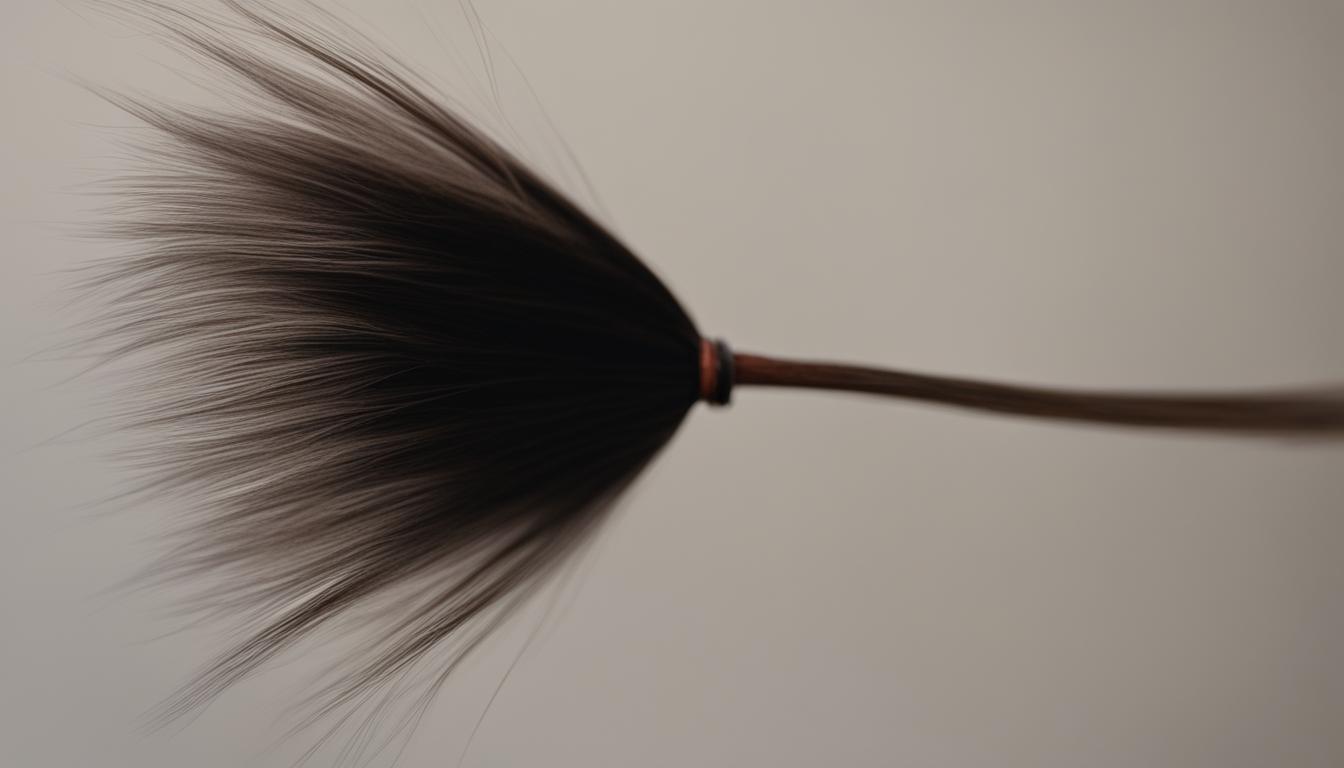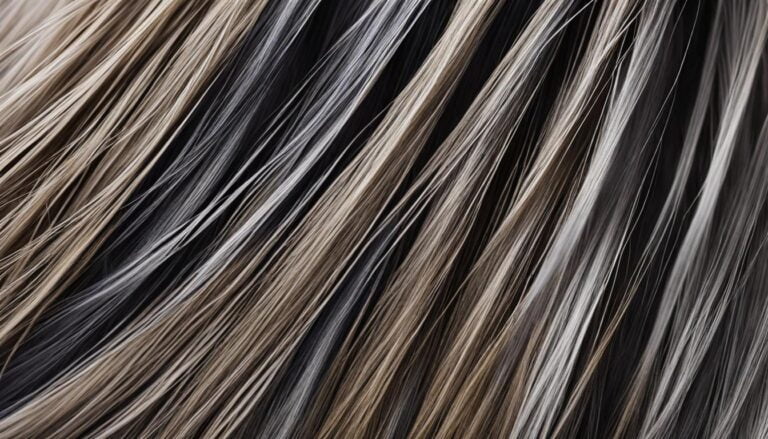What is the slowest hair can grow?
On average, the hair on your head grows about half an inch per month. However, the rate at which hair grows can vary from person to person and is influenced by several factors. Genetics play a role in determining the length of the active phase of hair growth, known as the anagen phase. This phase can last anywhere from two to six years before shedding. Additionally, ethnicity can affect the rate of hair growth, with Black hair typically having the slowest growth rate at about a third of an inch per month, and Asian hair having the fastest growth rate at over half an inch per month. Hair color may not directly affect growth rate, but certain characteristics, such as red hair being finer and more prone to breakage, can create the illusion of slower growth.
Key Takeaways:
- The rate at which hair grows can vary from person to person.
- Genetics, ethnicity, and hair color can influence hair growth rate.
- Black hair tends to have the slowest growth rate, while Asian hair has the fastest growth rate.
- Hair color characteristics can create the illusion of slower growth.
- The average hair growth rate is about half an inch per month.
Factors Affecting Hair Growth
When it comes to hair growth, there are several factors that can influence its speed and overall health. It’s important to understand these factors to promote optimal hair growth and address any concerns you may have. Let’s take a closer look at two key factors that can affect hair growth: climate and gender.
Climate and Hair Growth
Believe it or not, the climate you live in can impact the rate at which your hair grows. In warmer climates or during the summer months, increased physical activity and changes in hormonal cycles can stimulate hair growth. However, extreme weather conditions, such as excessive heat or cold, can have a negative effect on hair growth. It’s important to protect your hair from harsh environmental factors by using appropriate hair care products and avoiding excessive heat styling or exposure to direct sunlight.
Gender and Hair Growth
While gender does not have a direct biological influence on hair growth rate, there are certain factors that can cause a perceived difference. Women’s hair may appear to grow slower compared to men due to various reasons. Women often have longer hair lengths, which can make it appear as though their hair is growing slower. Additionally, frequent exposure to hair care products, styling tools, and hair routines can lead to damage and breakage, which can give the illusion of slower growth. It’s important for both men and women to take proper care of their hair to promote healthy growth.
Hair Growth Cycles
Understanding the different phases of hair growth can provide valuable insights into the overall hair growth process. Hair growth occurs in three distinct phases: the anagen phase, the catagen phase, and the telogen phase.
Anagen Phase
The anagen phase is the active growth phase of the hair follicles. It is the longest phase, lasting between two to six years.
During this phase, the hair follicles produce new hair cells at a rapid rate, resulting in visible growth. The length of the anagen phase is mainly determined by genetics and can vary from person to person. Factors such as ethnicity and hormone levels can also impact the duration of this phase.
Catagen Phase
The catagen phase is a transitional phase that follows the anagen phase. It lasts for about two to three weeks.
During this phase, the hair follicles shrink and detach from the blood supply, which slows down the production of new hair cells. This phase is essential for preparing the hair follicles for the resting phase.
Telogen Phase
The telogen phase is the resting phase of the hair growth cycle. It lasts for approximately two to three months.
During this phase, the old hair stops growing and remains in the follicle while new hair begins to grow beneath it. Eventually, the old hair sheds, making way for the new hair to emerge.
The hair growth cycle is continuous, with each hair follicle operating independently. This is why you may notice that some hairs are in different stages of growth at any given time. Understanding these growth cycles helps explain the fluctuations in hair growth rate and the shedding of hair.

Hair Growth and Hair Type
Hair type plays a significant role in the perception of hair growth. Different hair types have unique characteristics that can affect how fast hair appears to grow.
Straight hair tends to have the most noticeable growth because it grows flat and downward. This makes any increase in length easily visible. So, if you have straight hair, you’ll likely notice your hair growth more prominently.
Wavy hair, on the other hand, may appear to have slower growth due to its s-shaped pattern. The waves can create more volume and texture, making it harder to notice the actual length increase. Additionally, wavy hair is prone to tangles and frizz, which can further mask the appearance of growth.
Curly hair growth can be challenging to detect due to its natural outward and spiral growth pattern. The curls tend to bounce and spring up, making the growth less apparent to the naked eye. However, proper care and maintenance can enhance the visibility of growth in curly hair.
Coily hair, characterized by a dense and tightly coiled structure, may seem to have the slowest growth rate. This is mainly because coily hair experiences significant shrinkage, which means that the actual length can be concealed. However, embracing the natural texture of coily hair and ensuring proper moisturization can promote healthy length and make growth more noticeable.
Key Points:
- Straight hair growth is the most noticeable due to the flat and downward growth pattern.
- Wavy hair growth may appear slower due to the s-shaped pattern and the potential for tangles and frizz.
- Curly hair growth can be harder to detect due to its outward and spiral growth pattern.
- Coily hair may seem to grow the slowest due to shrinkage, but proper care and moisturization can promote healthy length.
Hair Growth Myths and Facts
When it comes to hair growth, there are many myths and misconceptions that circulate. Let’s debunk some of the most common ones and separate fact from fiction.
Myth: Trimming hair makes it grow faster
Contrary to popular belief, trimming your hair does not make it grow faster. While regular trims can help remove dry and split ends, they do not affect the actual growth rate of your hair. The rate at which your hair grows is determined by factors such as genetics, overall health, and hormonal balance.
Myth: Hair growth differs between males and females
While there may be differences in hair thickness and texture between males and females, the rate of hair growth is generally the same. However, certain external factors, such as hair care practices and styling routines, can create the illusion of slower growth in women. It’s important to note that everyone’s hair grows at a different pace, regardless of gender.
Myth: Eyebrow hair growth is longer in older adults
As we age, the appearance of our eyebrows may change due to factors like hormonal shifts and changes in the skin. While it may seem like eyebrow hair grows longer in older adults, it is actually the result of less precise arrangement of keratin within the hair and changes in the surrounding skin. Hormonal changes can also contribute to more pronounced eyebrow hair in older individuals.
It’s essential to dispel these myths to have a better understanding of how hair growth works. Remember, maintaining a healthy lifestyle, practicing good hair care habits, and using products suitable for your hair type can help promote optimal hair growth.

Conclusion
In conclusion, understanding the factors that influence hair growth is essential for achieving healthy and long hair. Genetics, ethnicity, and hair type all play a role in determining the rate at which hair grows. While certain factors may contribute to slower hair growth, such as Black hair having the slowest growth rate, there are ways to promote optimal growth.
It is important to debunk common hair growth myths, such as the belief that trimming hair makes it grow faster. Trimming only removes damaged ends, which can actually promote healthier growth. Additionally, understanding that hair growth does not differ between males and females can help dispel the misconception that women have slower hair growth.
To promote hair growth, it is vital to take good care of your hair. This includes maintaining a healthy diet to provide necessary nutrients, following proper hair care practices, and using products suitable for your specific hair type. By implementing these hair care tips and understanding the science behind hair growth, you can help support and enhance the natural growth of your hair.
FAQ
What is the slowest hair can grow?
On average, hair on the head grows about half an inch per month. However, the slowest hair growth rate is typically seen in Black hair, which grows at about a third of an inch per month.
What factors affect hair growth?
Hair growth is influenced by factors such as genetics, ethnicity, hair type, and hormone levels. Climate and gender can also play a role in the speed of hair growth.
What are the different phases of hair growth?
Hair growth occurs in three distinct phases: the anagen phase (active growth phase), the catagen phase (transition phase), and the telogen phase (resting phase).
How does hair type affect hair growth?
Hair type can influence the perception of hair growth. Straight hair tends to have the most noticeable growth, while wavy, curly, and coily hair may appear to grow slower due to their patterns and structures.
Do hair growth myths have any truth to them?
No, several hair growth myths need to be debunked. Trimming hair does not make it grow faster, and hair growth does not differ between males and females. Hormonal changes can contribute to more pronounced eyebrow hair in older individuals.
What can I do to promote hair growth?
Taking good care of your hair, including a healthy diet, proper hair care practices, and using products suitable for your hair type, can help promote optimal hair growth.







